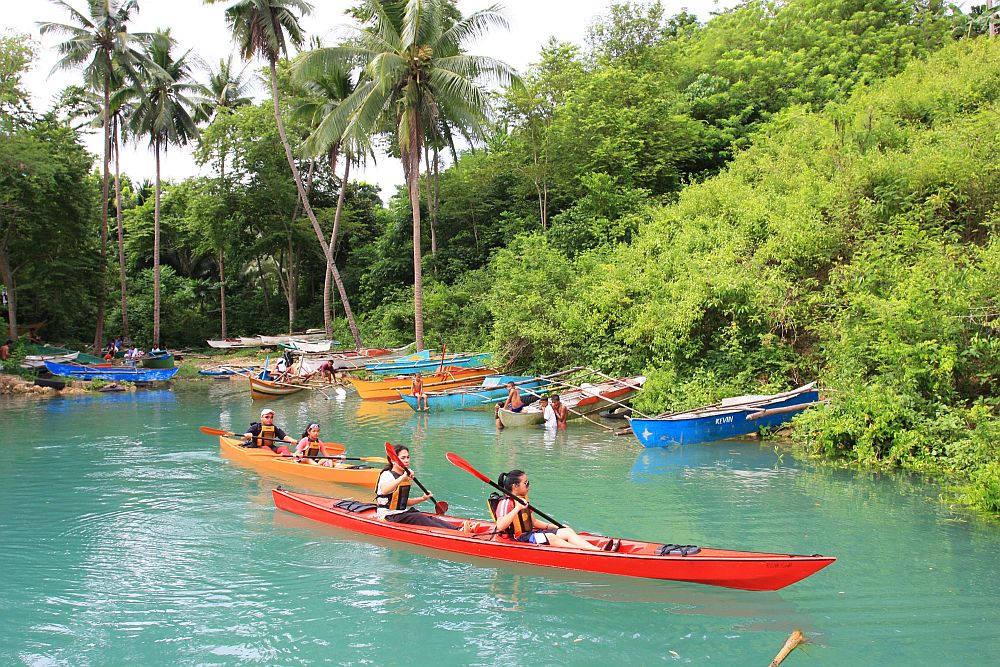
BOHO RIVER: Aloguinsan’s free-flowing Buho River being developed into an eco-tourism attraction. (CDN PHOTO/TONEE DESPOJO)
CEBU CITY, Philippines – While the Philippine government has not issued a travel ban on South Korea, tourism stakeholders in Cebu have braced themselves for the impact of such possibility.
The Hotel Resort and Restaurant Association of Cebu (HRRAC), and Cebu Association of Tour Operators (Catos), two of Cebu’s largest organizations catering to tourists, said they are preparing measures to offset the consequences of possibly extending travel restrictions to South Korea.
HRRAC has over 100 members. Catos, on the other hand, has at least 40 operators belonging to their group.
South Korea has recently reported a sharp increase in the number of patients confirmed to have the highly contagious Coronavirus Disease 2019 (COVID-19).
This event even prompted Cebu City Mayor Edgardo Labella on suggesting to include South Korean travelers arriving at Mactan Cebu International Airport (MCIA) to undergo the mandatory 14-day quarantine.
South Koreans have remained the top market for tourism not only for the entire Philippines but also for Cebu.
Follow the Rules
Presidents Carlos Suarez of HRRAC, and Alice Queblatin of Catos told Cebu Daily News Digital, in separate interviews, that they are ready to comply with any new directives from the Inter-Agency Task Force on Emerging Infectious Disease (IAFT-EID).
The task force is composed of the Health, Foreign Affairs, Social Welfare, Justice, National Defense, Transportation, Interior and Local Government, and Tourism bureaus of the government.
On February 24, IAFT-EID announced that they are studying the possibility of including South Korea in the travel ban. Travel restrictions were earlier imposed on the whole of China and has directly affected the tourism industry of the Philippines.
While the number of suspected COVID-19 cases in the Philippines has gradually dropped since last week, there are fears of increasing numbers in countries outside China such as South Korea.
Market stocks have also dipped as uncertainty continues to loom not only in Asia but also in Europe as well since Italy, with over 260 individuals tested positive of the new virus, also reported an increase in their tally.
As of February 25, close to a thousand people have been infected with COVID-19 in South Korea.
The Department of Foreign Affairs (DFA) here on February 24 has strongly advised Filipino travelers to postpone or delay non-urgent travel to the Korean country.
Plan B
South Koreans have remained the Philippines’ top source of foreign arrivals in 2019 – at 1.98 million – records from the Department of Tourism (DOT) showed.
They are also Cebu’s top tourism market for 2018. DOT in Central Visayas (DOT – 7) recorded 1.34 million foreign tourists from South Korea who visited Cebu that year.
Direct flights between Cebu and several cities and regions in South Korea – such as Seoul and Busan – also topped the most number of international flights catered at MCIA, with 188 flights per week.
The Chinese came second, with 621, 993 tourists who visited Cebu. It was also the fastest-growing market for the province.
DOT- 7 is yet to release the official figures of tourist arrivals in Cebu for 2019.
Since the Philippine government-imposed travel restrictions on China, HRRAC and Catos noted a decrease in their bookings.
However, both groups said they are now coming up with ‘recovery plans’ for their respective industries – in line with DOT’s calls for tourism players in boosting domestic tourism to cushion the impact of COVID-19.
Both Suarez and Queblatin said they are aiming their marketing efforts on promoting Cebu as a prime, domestic tourist destination, especially that summer in the country is drawing near. /rcg

